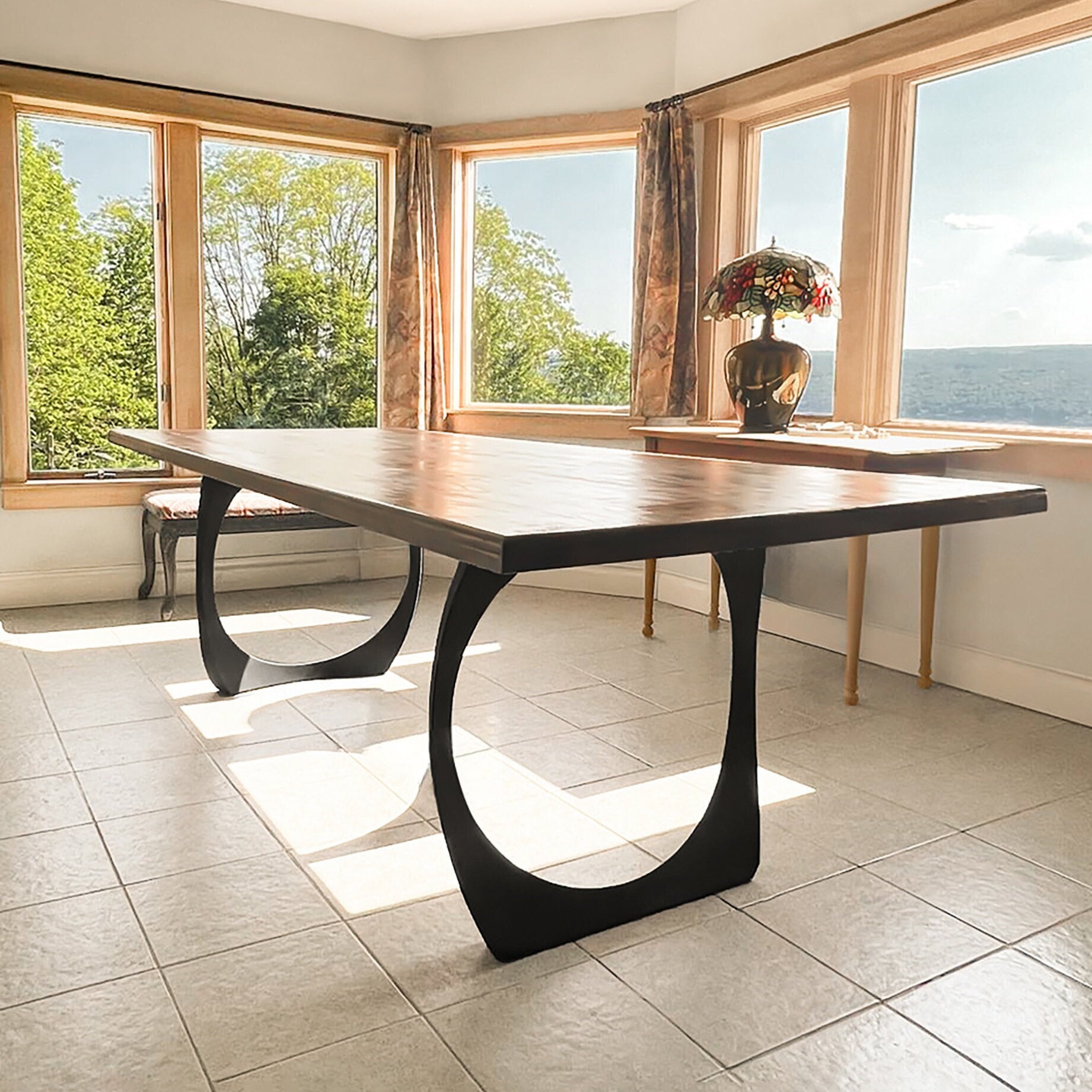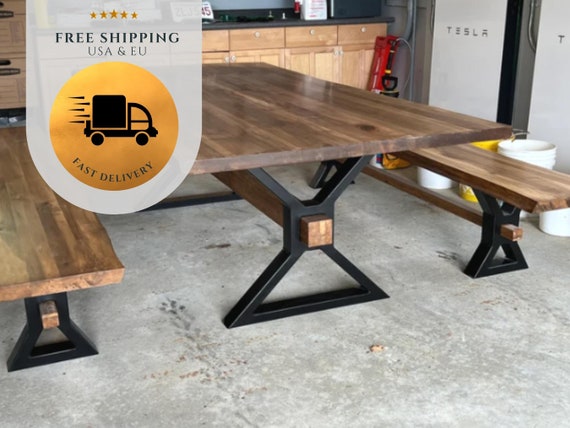Discover the Best Products for Dining Room Table Legs for each Style
Discover the Best Products for Dining Room Table Legs for each Style
Blog Article
Picking the Perfect Eating Table: What Styles Job Best for Your Home?
Choosing the ideal dining table for your home can be a nuanced process that stabilizes looks and functionality. To navigate these choices effectively and find a table that genuinely matches your home, take into consideration the adhering to facets in detail.
Analyzing Your Area
Assessing the dimensions and layout of your eating area is a crucial initial step in choosing the perfect table. Begin by determining the size and width of the space, representing entrances, home windows, and other building attributes that might influence table placement. This ensures that your table not just fits however additionally enables for comfortable motion around it.
Take into consideration the number of people you normally entertain. A table ought to suit your home's daily demands while providing sufficient adaptability for occasional visitors. As a rule of thumb, designate a minimum of 24 inches of table size per person to make sure a comfy eating experience.
It's also vital to keep ideal clearance around the table. Preferably, there ought to be at the very least 36 inches between the table side and walls or other furnishings, allowing very easy accessibility and movement. For areas where chairs with arms or added storage space units like buffets are involved, boosting this clearance to 48 inches is a good idea.
Illumination and environment play considerable functions also. Guarantee that your eating table straightens with existing lights components or prepare for sufficient lighting options. This thorough spatial evaluation assurances that your eating table not just fits physically but also harmonizes with your area's general performance and visual.
Popular Table Styles

Traditional dining tables frequently feature elaborate information, bent legs, and abundant wood finishes, evoking a feeling of classic style. They are excellent for homes with timeless design or those wanting to include a touch of refinement to their dining location.
Modern dining tables prioritize simplicity and clean lines, usually including materials like glass and steel. These tables are optimal for contemporary rooms, supplying a sleek and uncluttered look that complements minimal style ideologies.
Rustic dining tables, on the various other hand, emphasize natural products and a handmade look - dining room table legs. They commonly feature recovered wood and a troubled finish, creating a cozy and inviting ambience. These tables work well in farmhouse-style homes or those looking for a comfy, natural feeling
Industrial eating tables combine basic materials such as metal and timber, usually showcasing an utilitarian visual. This design is fit for lofts or urban spaces, including a touch of rugged charm and durability to the dining experience.
Each style supplies distinct advantages, making it necessary to choose one that straightens with your home's total style and your individual preferences.
Product Selections
When picking a dining table, the selection of product plays a vital function in figuring out both the table's visual appeals and performance. Wood, metal, glass, and composite products each deal one-of-a-kind advantages and obstacles, making it critical to line up the product with your home's decor and way of living demands.
Wood is a classic and versatile option, offered in ranges such as visit our website oak, walnut, and mahogany. Understood for its longevity and warmth, timber matches both typical and modern insides. However, it requires regular upkeep to avoid scratches and warping.
Steel tables, typically crafted from stainless steel, light weight aluminum, or functioned iron, are applauded for their modern-day appeal and robustness. They are particularly matched for commercial or minimalist setups but can be vulnerable to dents and might really feel cold to the touch.
Glass table bring an air of beauty and visibility, ideal for smaller sized rooms as they create an illusion of more area. While simple to tidy, glass can be susceptible to spots and needs cautious taking care of to prevent chips and splits.
Composite products, such as MDF and plywood, offer affordable and customizable options, though they may lack the longevity of all-natural products. Picking the best product guarantees your table is both a useful asset and an aesthetic pleasure.
Forming and Dimension Considerations
After establishing the appropriate product for your dining table, the following factor to consider is picking the appropriate shape and size to match your room. Alternatively, rounded site web tables cultivate a sense of affection and are exceptional for smaller eating areas, encouraging discussion by removing corners and making everybody really feel just as consisted of.
Dimension is equally critical and should be dictated by both the space's measurements and the number of people you intend to seat regularly. As a regulation of thumb, allocate at the very least 24 inches of table size each to ensure comfy dining. Additionally, take into consideration the table's clearance room: there need to go to least 36 inches in between the table edge and the wall surfaces or other furniture. This makes sure that diners can move easily without feeling confined. Extending tables use versatility if you often host larger gatherings, supplying extra seats when required without inhabiting additional space daily. Choosing the ideal sizes and shape guarantees both practicality and aesthetic consistency in your eating area.
Matching Your Decor
Selecting a table that integrates with your existing design is critical in creating a natural and welcoming room. Begin by assessing your existing indoor design style, whether it be modern, conventional, rustic, or diverse. The eating table should enhance the general aesthetic, not take on it. A sleek, minimalist table with tidy lines is perfect for a contemporary home, while a vintage, ornate table suits site here an extra traditional setting.
If your style includes warm tones and natural materials, consider a wood table to boost the organic feel. Conversely, a glass or steel table may be more appropriate in a room dominated by trendy shades and industrial elements.
A rough-hewn, redeemed timber table can include personality to a rustic area, while a polished marble surface area can raise a glamorous dining location. A well-matched dining table not only boosts visual allure yet also improves the overall eating experience.

Conclusion
Picking the suitable eating table necessitates careful factor to consider of room, design, products, form, and size. Conventional tables complement classic insides with rich timber finishes, while modern tables match contemporary settings through glass and metal.
Report this page